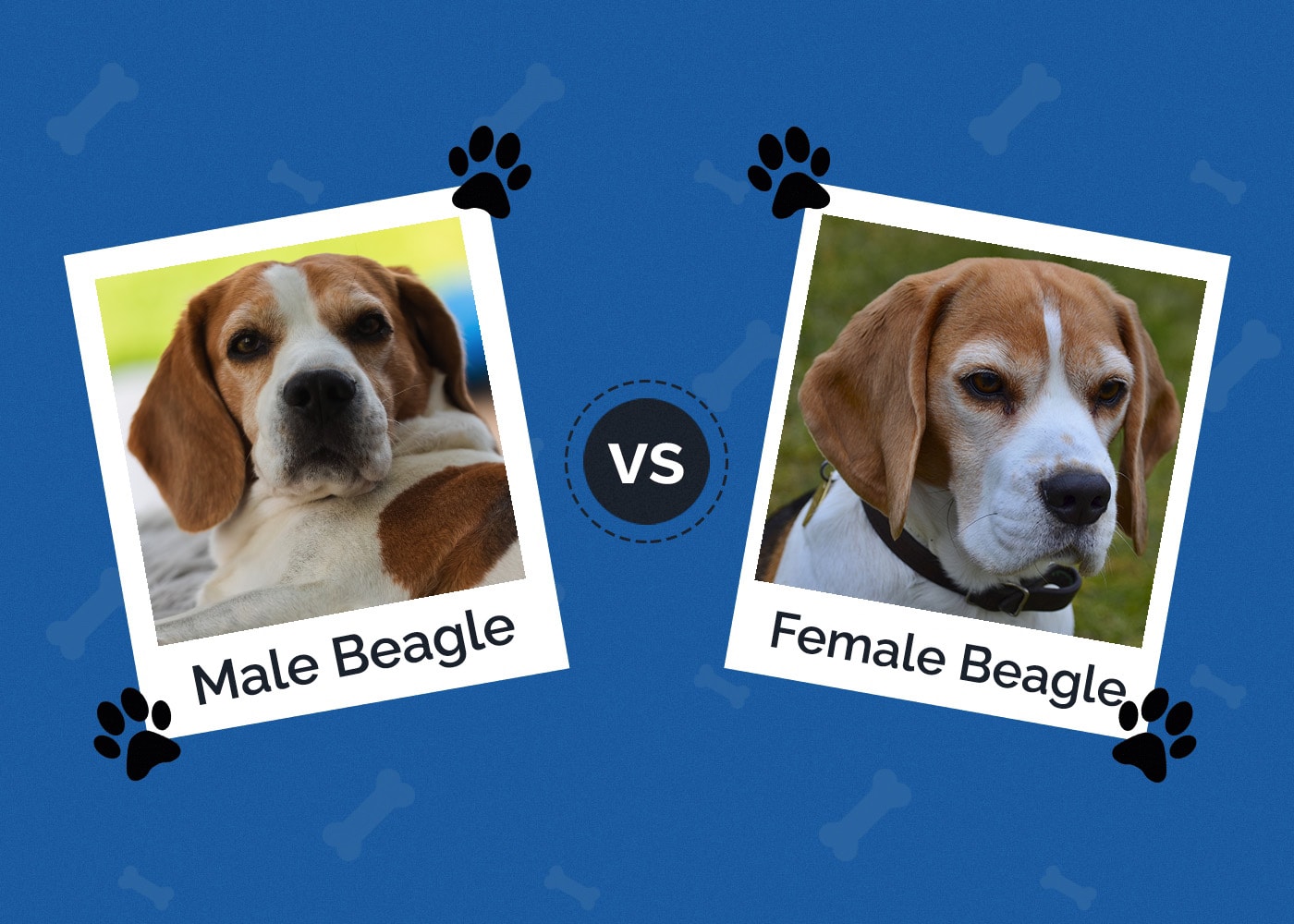Miniature Schnauzer vs Scottish Terrier: Which Pet Is Best for You? (With Pictures)
Updated on
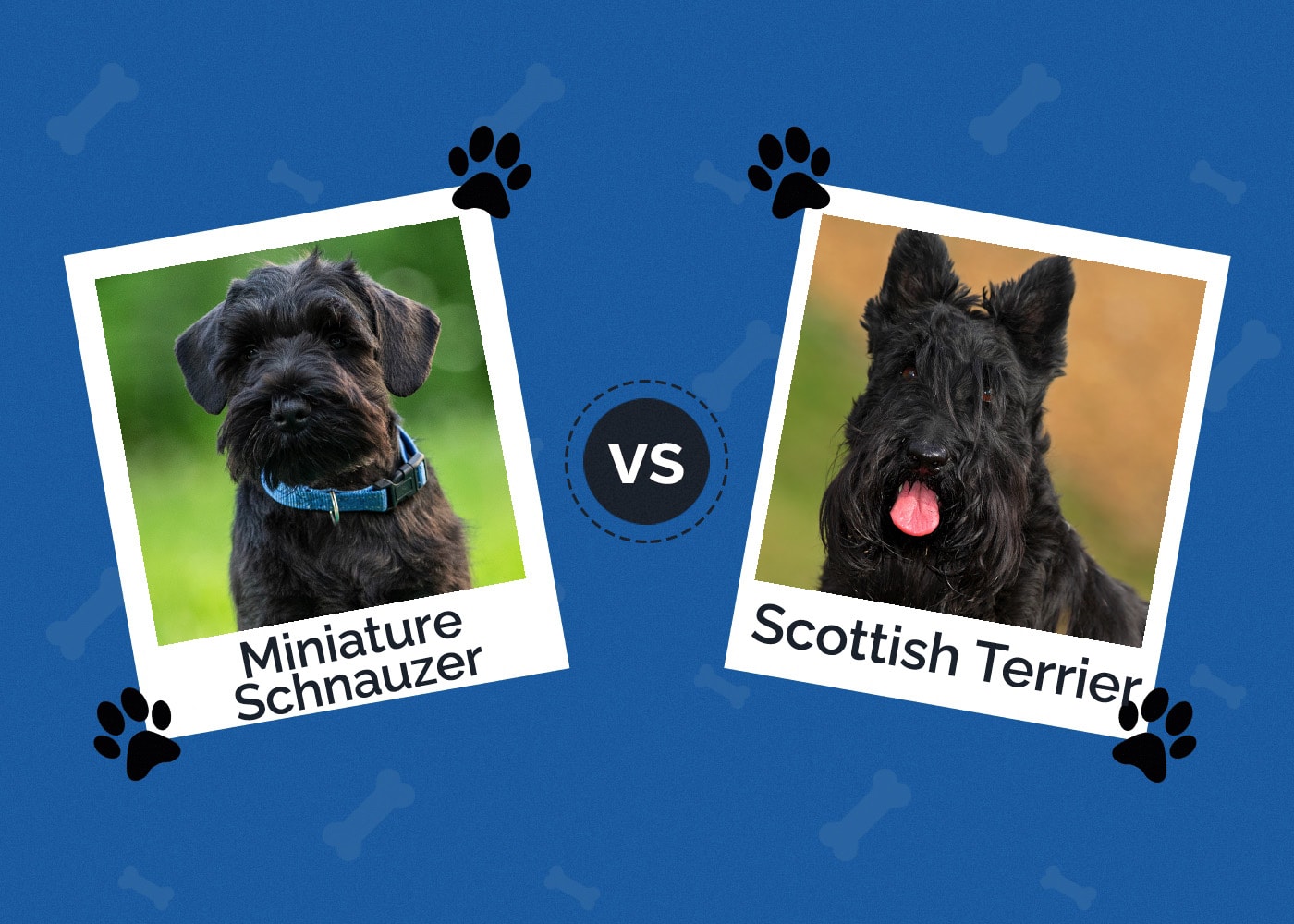
The Miniature Schnauzer and the Scottish Terrier are small dog breeds, and both enjoy spending time in social and family atmospheres. However, while they have similar attributes and look a bit alike, these are two completely different dog breeds with different temperaments and personalities.
It can be tough to decide which type of dog is best for your household, so we put together this comprehensive guide that outlines the similarities and differences between the Miniature Schnauzer and Scottish Terrier. Here is what you should know!
Visual Differences
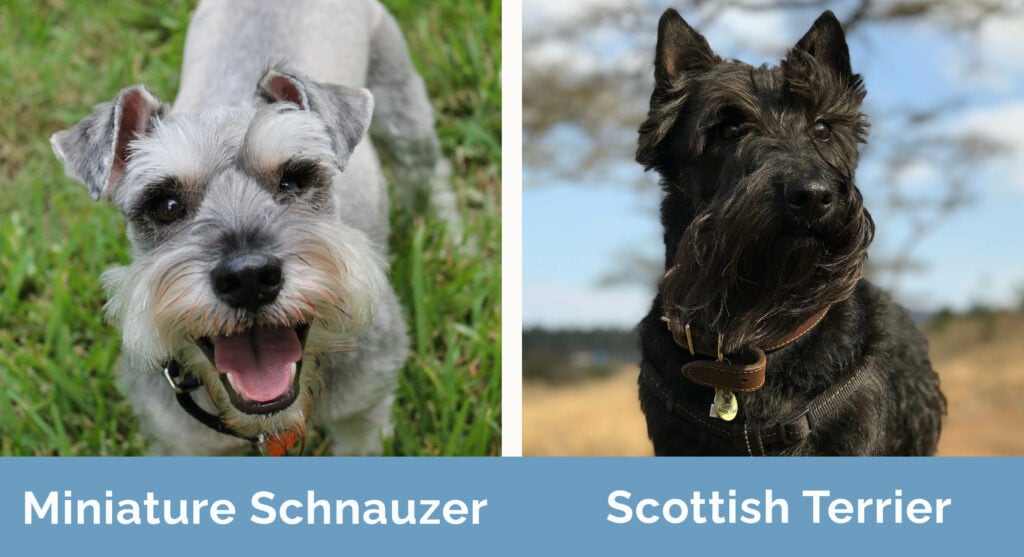
At a Glance
- Average height (adult): 12–14 inches
- Average weight (adult): 11–18 pounds
- Lifespan: 12–15 years
- Exercise: 1+ hours a day
- Grooming needs: Moderate
- Family-friendly: Yes
- Other pet-friendly: Often
- Trainability: Friendly, eager to please, family-oriented
- Average height (adult): 10–11 inches
- Average weight (adult): 18–22 pounds
- Lifespan: 12–15 years
- Exercise: 30+ minutes a day
- Grooming needs: Moderate
- Family-friendly: Yes
- Other pet-friendly: Often
- Trainability: Smart, independent, excitable
 Miniature Schnauzer Overview
Miniature Schnauzer Overview
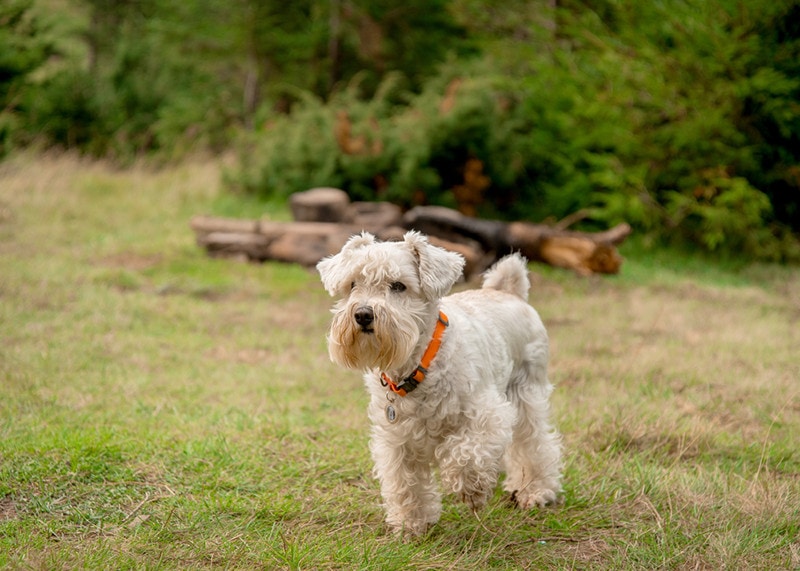
Schnauzers are thought to have been developed in Germany during the 19th century.1 The breed was initially designed to work on farms as ratters, guarders, and even livestock herders. However, as time passed, breeders wanted to create a smaller version of the dog that would be even more efficient as ratters. This miniature breed was introduced to the United States in the 1920s, a few years before the American Kennel Club officially recognized them.
Personality / Character
This little dog breed tends to be big on personality. Miniature Schnauzers are lively dogs that love to be a part of the action. They enjoy spending time with their family members and always seem eager to please their owners. These dogs especially like playing games like “fetch” and “keep away” when spending time outdoors. They usually get along well with children of all ages and can learn to live peacefully with other dogs and cats.
Training
These intelligent dogs tend to take well to training and love a good challenge, whether learning new obedience skills or practicing on the agility course. They get bored easily, though, so training should always be fun and different. They are good at focusing on their tasks at hand and would prefer to learn how to do a “job” of some kind at home so they feel useful.
Common Health Conditions
The Miniature Schnauzer is generally a healthy dog breed, but there are certain health conditions that they are susceptible to. Owners should be aware of such problems so they can be discovered early, when it’s easier to address them. These include:
- Allergies
- Diabetes
- Pancreatitis
- Epilepsy
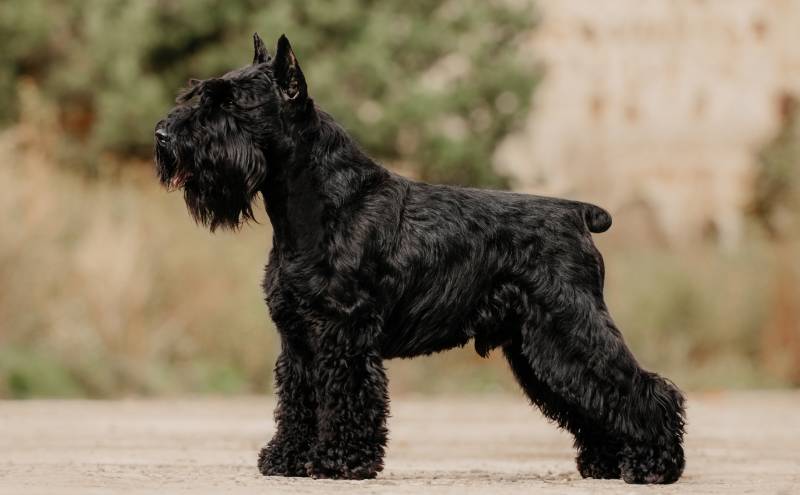
Suitable for:
The Miniature Schnauzer makes a great family pet that can get along well in busy households filled with kids and quiet apartments with single or senior occupants. They do need to go outside for walks each day, but they don’t mind spending time inside with their human family members.
Scottish Terrier Overview
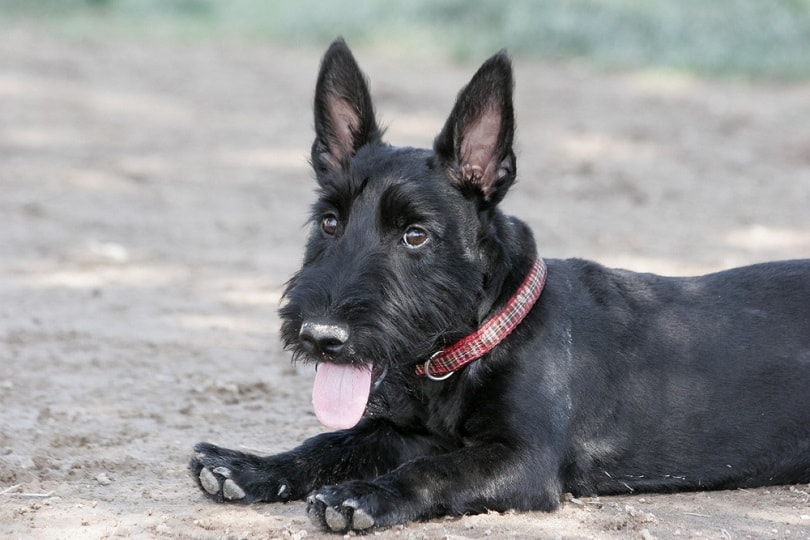
As their name suggests, Scottish Terriers hail from Scotland, where they are believed to have been developed sometime in the 1500s.2 It wasn’t until the 1800s that this breed was standardized and made their way to the United States. These dogs were bred to hunt badgers, which is why they have such strong tails. If a Scottish Terrier got stuck in a hole while chasing a badger, their owner could pull them out by their tail.
Personality / Character
Scottish Terriers are fun-loving and highly affectionate creatures. They can get along with kids, but they must be socialized from a young age, or they may be suspicious of strangers of all ages. They tend to have plenty of energy throughout the day, so they are always looking for something fun or entertaining to do. They tend to bark frequently, especially if they feel like they are being ignored.
Training
Like the Miniature Schnauzer, the Scottish Terrier is smart. However, they are not that focused and get distracted easily, so training requires practice and patience. Once trained, these dogs do well in social situations and can even learn to run an agility course in competitions due to their athleticism and eagerness to work.
Common Health Conditions
Scottish Terriers are hardy little dogs that are susceptible to a few health conditions but generally stay healthy throughout their lives with proper diet, regular exercise, and loving care. The health conditions that owners should be most worried about include:
- Patellar luxation
- Eye conditions
- Thyroid dysfunction
- Von Willebrand’s disease
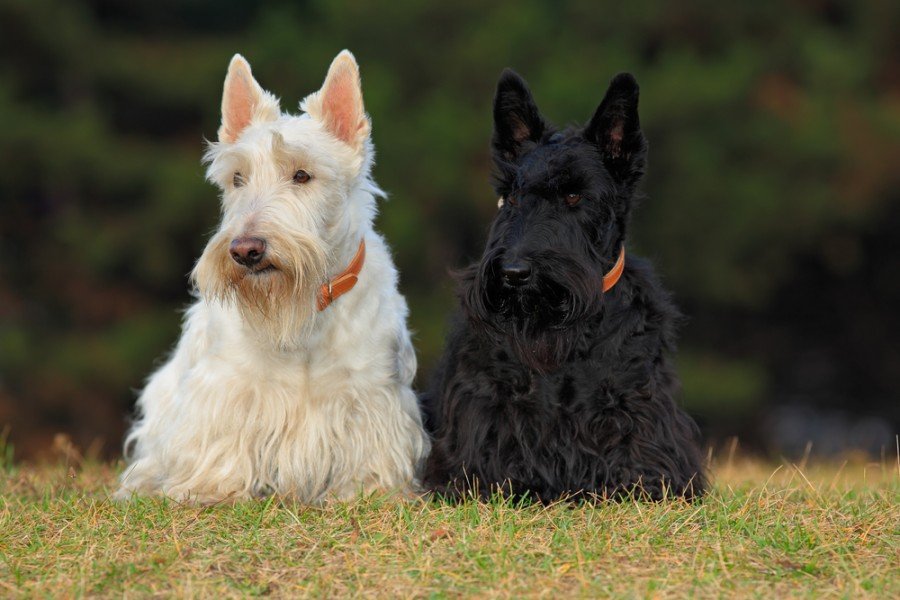
Suitable for:
These dogs are most suitable for houses with fenced yards and families who are home to pay attention to them. They can get along fine in an apartment setting, but they should go out for walks and playtime at least twice a day. They don’t mind living with other pets, but they are independent and prefer having their own space to hang out where young kids and animals can’t bother them.
 Physical Characteristics
Physical Characteristics
The Miniature Schnauzer and Scottish Terrier look similar, but there are a few differences to look for when trying to tell the two apart. For example, the Scottish Terrier’s ears naturally stand erect, while the Miniature Schnauzer’s ears usually fold over unless they are docked. The tail of the Miniature Schnauzer tends to be much shorter and thicker than the Scottish Terrier’s.
The Scottish Terrier’s coat is smoother and less curly than the Miniature Schnauzer’s. They both have short, stout bodies and their hair grows long, so haircuts are typically required for them. When it comes to coat colors, the Miniature Schnauzer usually comes in black, black and silver, and “salt and pepper,” whereas the Scottish Terrier typically comes in black, wheaten, and brindle.
Which Breed Is Right for You?
Both Miniature Schnauzers and Scottish Terriers are smart, sociable dogs that are fun to spend time with. However, they do have different personalities. The Miniature Schnauzer tends to like kids more and doesn’t mind spending time alone at home, whereas the Scottish Terrier is needier in terms of attention when they want it, but they prefer not to be bothered by young kids. So, the dog that is right for you comes down to your household’s lifestyle and personality preferences.
Featured Image Credit: (L) Svitlana Diuba, Shutterstock | (R) Ondrej Prosicky, Shutterstock

 Miniature Schnauzer Overview
Miniature Schnauzer Overview Physical Characteristics
Physical Characteristics



